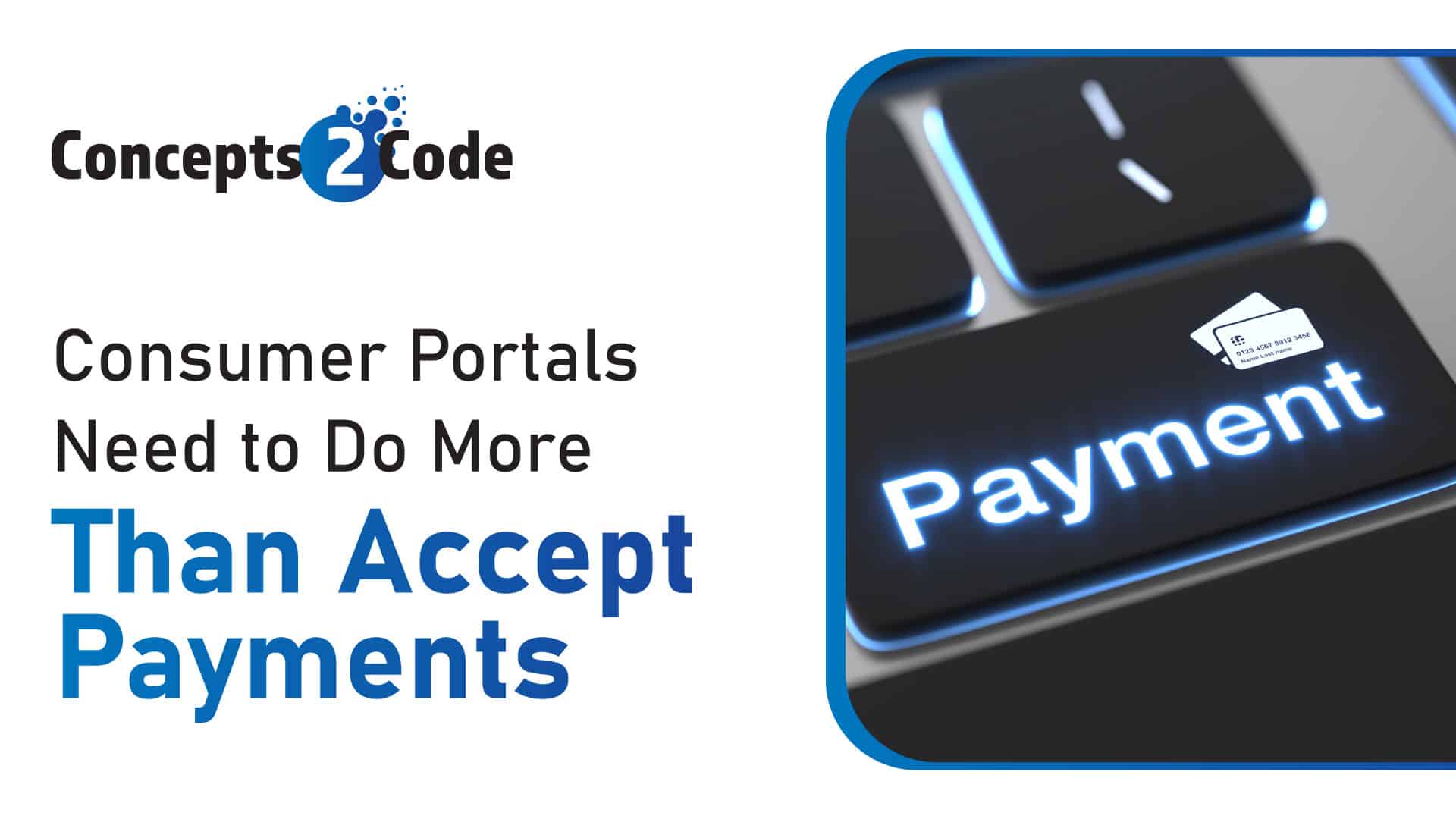The receivables management industry is quickly becoming an e-commerce business. As much as we may try to deny it, this shift has become increasingly inevitable within this digital age. Consumers are no longer mailing in checks and the rates of call-in payments are also decreasing in lieu of a far easier option: online portals.
In recent years, there has been a massive increase in both mobile traffic and the volume of payments going through digital channels as opposed to traditional methods. In response to this, payment portals need to adapt to this influx of demand and be more than just a place to submit a payment.
Enhancing the Online Portal Experience
Today, everyone uses an online portal to make payments—whether it be for credit card payments, utility bills, online stores, etc. Luckily, the people who build these portals are, themselves, also consumers, meaning they have a significant amount of personal experience dealing with different portal types, each offering a variety of functions and features.
Observations obtained by these different experiences can be utilized to enhance the online portal experience. Developers recognize positive experiences, and try implementing similar ideas in their own systems, while simultaneously acknowledging negative experiences (such as difficulty with logging in, inability to see payment histories, etc.) and aiming to solve those problems in their portal builds. Ultimately, it is a game of discovering best practices and combining these e-commerce ideas from different markets to continually enhance the online portal experience.
Focusing on Improving Consumer Experiences
The huge shift towards a focus on consumer experience demonstrates how this industry has become more and more e-commerce based. The goal in receivables is to reduce consumer friction from “I found you” to “I paid you.” To drive these payments, consumers need a portal that fosters trust along with providing a cohesive, straightforward experience.
Payment portals are quickly morphing into ‘consumer portals,’ meaning they provide far more than just the ability to submit a payment. New consumer portals provide a variety of services, such as the ability to download statements, check balances, see past payments, set up payment plans, and more. Implementing these features into the portal forms a level of trust with end users. Consumers are accustomed to the online features of their original creditor or bank, so providing similar comprehensive services gives consumers a sense of familiarity with the navigation, thereby building both confidence and trust.
Another way to drive trust is by customizing portals with each agency’s branding. By having the portal display the agency logo and use the agency domain name so links and emails are all connected to the company, the consumer does not feel like they have been sent to a third-party “stranger” to submit payments. While promotion for a payment portal may be warranted when dealing with potential clients, it is an unnecessary distraction for end users and omitting it improves the overall consumer experience.
Limitation of Options
The cornerstone of a consumer portal is providing the user with more than just a simple click-to-pay option; however, there needs to be a balance between offering flexibility with a good interface and avoiding choice overload. Choice overload, also known as overchoice, is the paradoxical phenomenon where such a great number of options have been presented that the individual in need of making a decision becomes cognitively impaired by overwhelm, ultimately struggling to make any decision at all. As such, payment portals should condense the processes as much as possible without removing essential pieces.
A great example of this limitation of options is Concept2Code’s Offers Page. This page provides three simple “pre-packaged” options to the consumer: Settlement, Pay in Full, or a Pre-Set Payment Plan (ie. a 12-month pay-off period). This displays the three most commonly selected payment methods in both an easy to use and easy to digest manner. That’s not to say that other options are not still made available on the portal, but that they are not readily offered and require clicking through to access in order to avoid choice overload and reduce payment friction.
Custom Development
A successful payment portal is one that continuously upgrades and adapts as new ideas and technological advances come about. This can be easily accomplished in two different ways: by listening to the agencies/clients, and by analyzing the user’s experience.
Cultivating a feedback loop with clients can provide a wealth of insight into the usage and even potential for a portal. Developers can find out what features are working well, what isn’t functioning properly, what is being used most commonly, and other areas for improvement. Similarly, when focusing on consumer design, the developers assess the usage and adjust the portal accordingly to provide the consumers with the most streamlined experience possible, ultimately driving payments.
About Concepts2Code
Concepts2Code provides fully managed, secure, cloud-based solution software designs for all types of businesses. We recognize that each business has different needs. Our services and solutions are tailored to meet those unique needs while improving customer satisfaction through a better customer experience. With our software, businesses increase compliance through account customization while driving operational efficiency through automation in their daily processes.


